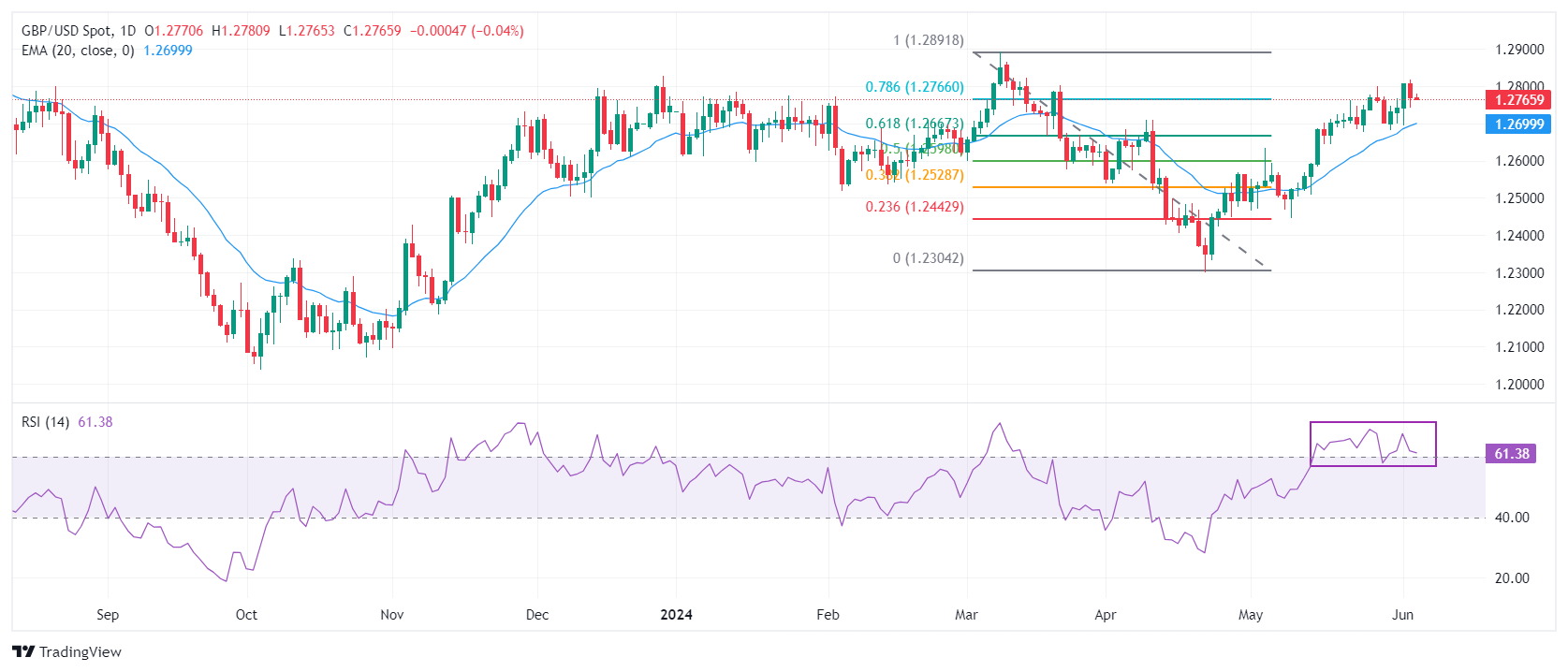Pound Sterling stuck in tight range as investors await US ISM Services PMI

- The Pound Sterling remains sideways against the US Dollar with eyes on crucial US economic data.
- Market speculation for the Fed reducing interest rates in September strengthens.
- The BoE is expected to deliver two rate cuts this year.
The Pound Sterling (GBP) trades in a tight range above 1.2750 in Wednesday’s London session. The United Kingdom’s (UK) economic calendar lacks top-tier events this week. Therefore, potential moves in the GBP/USD pair will be guided by the US Dollar (USD), which is expected to remain active due to a data-packed week in the United States (US).
The US Dollar Index (DXY), which tracks the Greenback’s value against six major currencies, manages to hold above the crucial support of 104.00. However, the near-term outlook of the US Dollar remains uncertain amid growing speculation that the US Federal Reserve (Fed) will start cutting interest rates in the September meeting.
According to the CME FedWatch tool, 30-day Fed Funds futures pricing data suggests a 65% chance of interest rates declining from their current levels in September. The probability has risen significantly from 47% recorded a week ago. Weak US ISM Manufacturing PMI report for May and downwardly revised Q1 Gross Domestic Product (GDP) data have prompted Fed rate-cut bets for September.
Daily digest market movers: Pound Sterling trades on thin ice while US Dollar stabilizes above 104.00
- The Pound Sterling consolidates in a tight range near 1.2770 against the US Dollar. The GBP/USD pair struggles for a direction as investors shift focus to the US ADP Employment Change and the Institute for Supply Management’s (ISM) Services Purchasing Managers Index (PMI) data for May, which will be published at 12:15 and 14:00 GMT, respectively.
- The Automatic Data Processing (ADP) agency is expected to show that fresh private payrolls increased by 173K, lower than 192K in April. The ISM Services PMI, which gauges the service sector activity that accounts for two-thirds of the economy, is estimated to have returned to expansion, seen at 50.5, higher than the former release of 49.4.
- Apart from Services PMI figures, investors will also focus on other subcomponents, such as New Orders and Prices Paid Indexes, which will reflect the demand outlook and change in input prices. In the service sector, the major expenditure allocation goes into wages paid to workers, which has remained a key driver of persistent price pressures.
- This week, the major event will be the Nonfarm Payrolls (NFP) data for May, which will be published on Friday. The labor market data will provide fresh cues about the interest rate outlook. It is justified to say that the US labor market is normalizing. The US JOLTS Job Opening data for April showed that job postings were lower at 8.06 million from the expectations of 8.34 million and the former release of 8.35 million.
- In the United Kingdom, investors look for fresh cues about when the Bank of England (BoE) will start reducing interest rates. Currently, financial markets expect that the BoE will deliver two rate cuts this year and will choose the August meeting as the earliest point to start the policy normalization process.
Technical Analysis: Pound Sterling trades close to 78.6% Fibo retracement
The Pound Sterling trades inside Tuesday’s trading range, suggesting indecisiveness among market participants. The GBP/USD pair struggles to sustain above the 78.6% Fibonacci retracement support (plotted from the March 8 high of 1.2900 to the April 22 low at 1.2300) at 1.2770.
The Cable is expected to remain bullish as the 20-day Exponential Moving Average (EMA) at 1.2700 is sloping higher, indicating a strong uptrend.
The 14-period Relative Strength Index (RSI) has shifted into the 40.00-60.00 range, suggesting that the momentum has leaned toward the upside.
Economic Indicator
ISM Services PMI
The Institute for Supply Management (ISM) Services Purchasing Managers Index (PMI), released on a monthly basis, is a leading indicator gauging business activity in the US services sector, which makes up most of the economy. The indicator is obtained from a survey of supply executives across the US based on information they have collected within their respective organizations. Survey responses reflect the change, if any, in the current month compared to the previous month. A reading above 50 indicates that the services economy is generally expanding, a bullish sign for the US Dollar (USD). A reading below 50 signals that services sector activity is generally declining, which is seen as bearish for USD.
